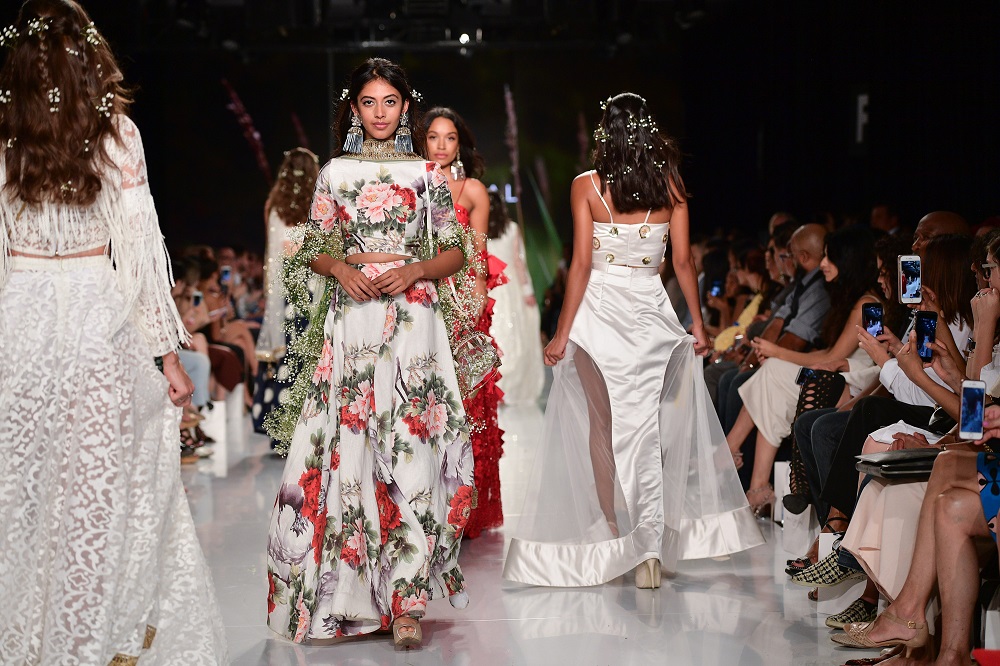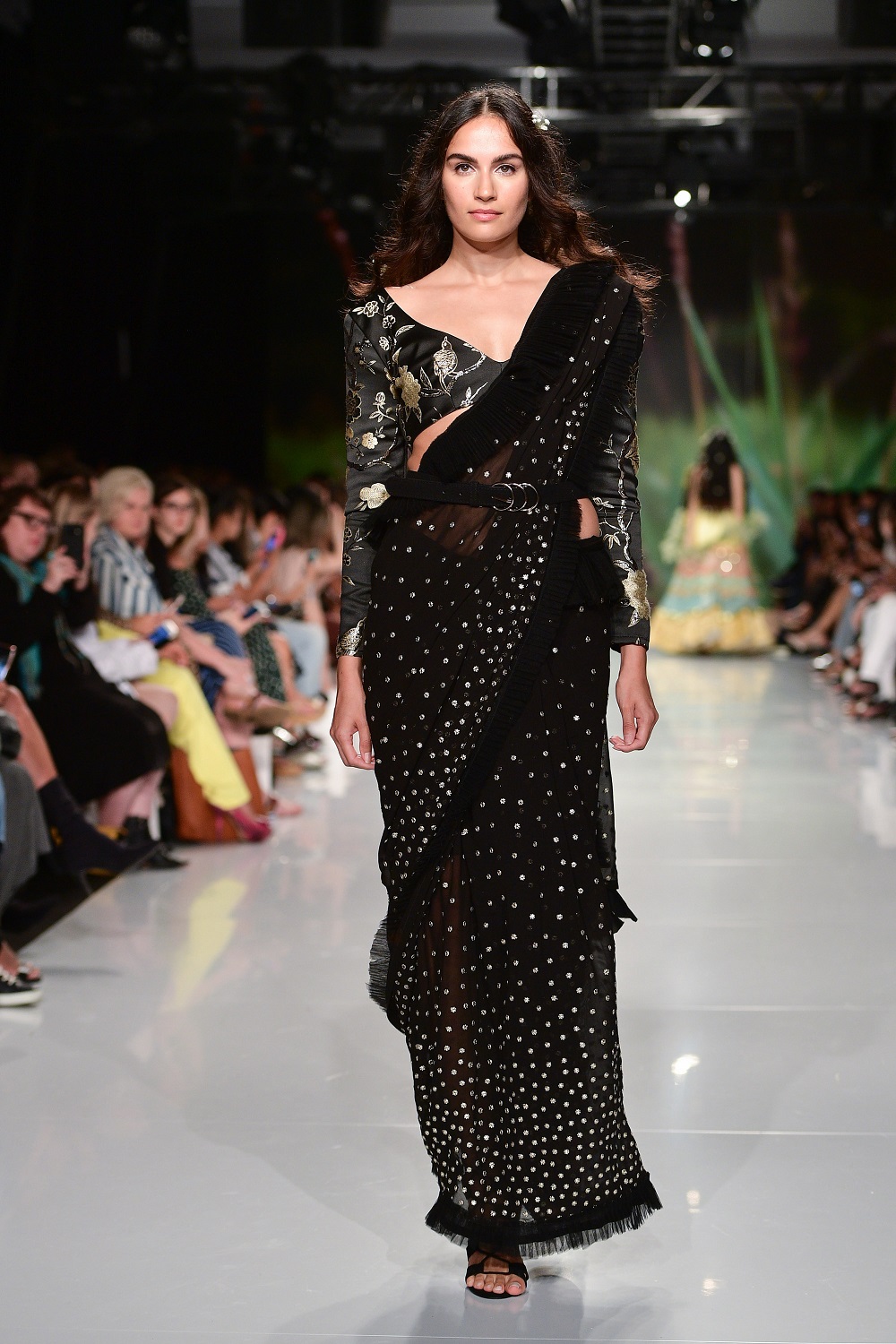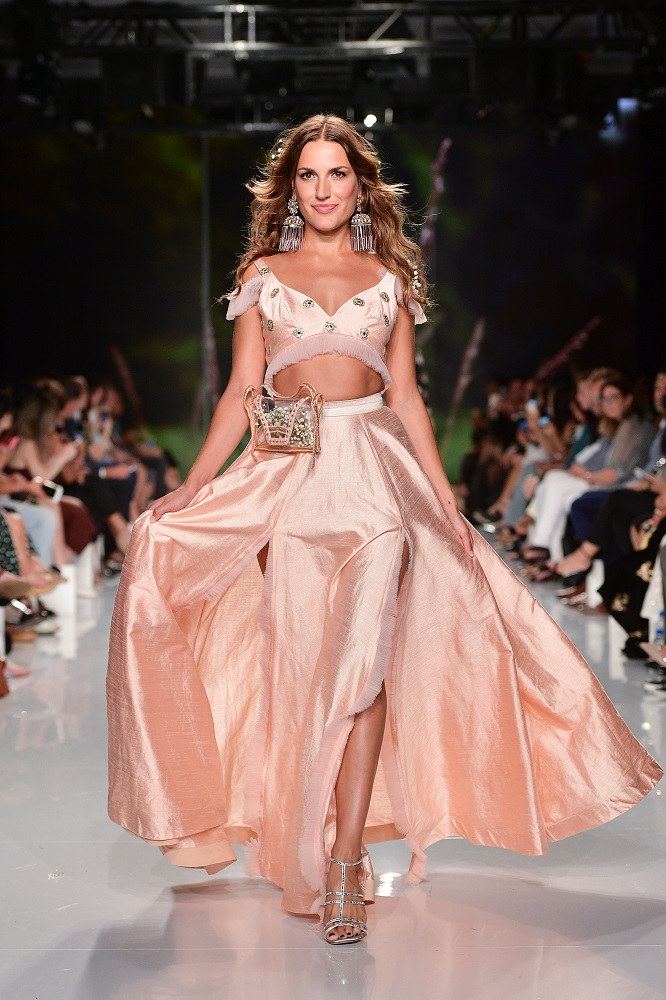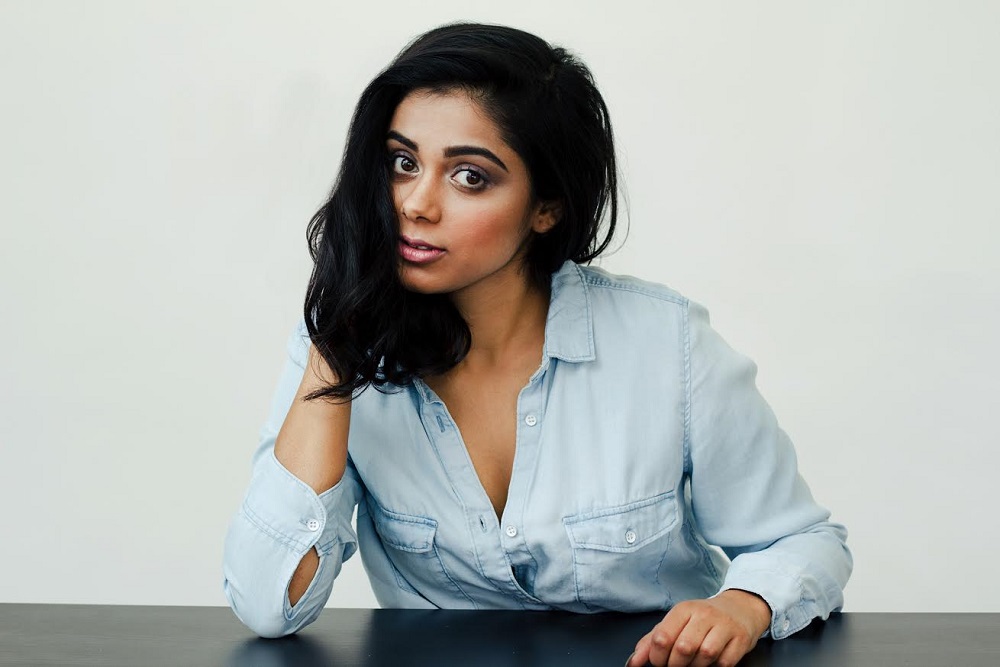We’ve made it our mandate to support all things Canadian that are giving our nation something to boast about. Here, we speak to Canadian designer Mani Jassal about Canadian-ness.
Written by Ross Dias
When Mani Jassal was starting out in the fashion industry as a recent graduate from Ryerson University’s School of Fashion, no one understood her aesthetic. Photographers and creative directors couldn’t wrap their heads around her unique blend of East and West fashion.
Moving to Canada at an early age, Jassal talks about how growing up she would have two closets: one, for her traditional Indian clothes and the other, her everyday jeans and t-shirts. While at Ryerson, Jassal struggled to figure out where she fit into the industry coming from a school where she was the best art student into a room where her peers were just as skilled as she was.
Jassal first bridged the different facets of her identity while creating her graduating collection for Mass Exodus, Ryerson’s annual fourth-year showcase. A few years later, Jassal’s business has grown, she has acquired clients from the world over, and she recently was on the official schedule of RESET 004 at Toronto Fashion Week. Now, Jassal is the designer of a namesake South Asian fashion label that challenges and pays homage to traditional norms.
Here, Jassal—whose collection ranges in size from XS to XXXL—talks about her Canadian and Eastern fashion identities, exploring the sari, and her global inspirations.


When I launched [my line] in 2016, I did my first show for my collection, “Udiapur Tea Party.” I did the next shows at my first store in Brampton, and then after that I did one at Berkeley Church. Putting on my own solo shows was what I was doing. But then I met Mel Ashcroft of THE COLLECTIONS, and that’s where I kinda got the connection for RESET 004 at Toronto Fashion Week.
This was the first time I did a runway show during RESET 004 at Toronto Fashion Week. In high school, I always dreamed about one day being part of the city’s fashion week. In the moment, it felt really surreal: a I finally made it kind of moment. Even though I’ve done shows in the past, it made me realize how far I’ve come as designer.
What separates this collection from your previous work?
It’s a tribute to my late friend, Honey, who passed away this summer. It’s called “Free Spirit” because he truly embodied what a free spirit is. Normally when I create collections, I’m always mindful of [what’s worked in the past]. Like, I can’t use this colour because it’s not gonna sell, or I can’t do this cut because it’s not gonna sell.
This time I thought, No, this is my art and I’m gonna put it out there and I’m not gonna compromise, just because of what other people are going think about it. In this collection, I really came into my own with the colours, the cuts, and fabric usage.
It’s called Free Spirit for a couple reasons. But one of the reasons is because the cuts are more rebellious. I’m doing bustiers, and traditionally [in South Asian culture], you’re not supposed to show that much skin. I’m utilizing colours like black, which are considered unlucky, but I love black and I find that women feel the sexiest in black. So, I want to push the box when it comes to using those colours.
Why was it important for you to explore the sari?
I’ve never actually designed a sari until I did this collection. I always found that I was stereotyped as a designer that would make a sari or people would just come in and say, Oh, you design saris! No, these are called lenghas. It was about educating everyone about the different, diverse options in Indian fashion, not just a sari. So, I finally did one. Actually, I did four in this collection and it was cool to have a sari walk down the runway at Toronto Fashion Week. I don’t know if anyone else has done it in the past.


How did you get into design?
I was 11 when I knew I wanted to become a fashion designer. It was something I consistently pursued as a kid; I always carried a sketchbook around with me. After my fourth year at Ryerson University, I created this non-traditional South Asian wear bridal collection for Mass Exodus. I was experimenting with leather, laser-cutting, different fabrics, and colors. I got a lot of good feedback from it; people wanted to purchase [the collection]. I had brands in India copying my clothes. I feel like when I created that collection I really bridged a gap between my generation: someone who immigrated here to Canada, who has Indian roots but is also Canadian. I found that with my clothing, I was able to merge those two worlds together.
Where do you get your inspiration?
When it comes to inspiration, it comes from everywhere. Whether that’s travel, music, or designers themselves. I love Alexander McQueen, because he was such a rebel; Coco Chanel because she was so classy, and then Karl Lagerfeld because of his work ethic. He designs for so many different houses, and it’s just unreal. Those are the three designers I try to embody. I’m heavily influenced by hip hop, you can see it in my campaigns as well. Inspiration comes from everywhere and it could be going to a fabric store and seeing one fabric, and then I’m inspired by it.
How has your background inspired your design?
I immigrated here when I was five years old with my parents. I always felt my Indian closet was kept separate in a box, whereas my Canadian closet—I guess you could call it—was out in the open, and I felt I had to keep those two things separate. When I started designing my collections, that’s when I realized that they don’t have to be two separate entities; they can be one. At the end of the day, they’re just clothes. So, why can’t I wear a bustier or a lengha choli [floor length circle skirt with a chest blouse] with a pair of jeans on my day to day? It’s definitely doable.


What has the reaction been to your experimentation between these two cultures?
I did some styling when I first graduated, and I was doing that mixing and matching of Western and Indian wear. At that time nobody was doing it. When I would like try to explain that concept to a photographer, I couldn’t find it anywhere on Google to show [references]. But now, Instagram is flooded with brown girls embodying that vibe. By doing that, I kind of paved the way for a lot of girls.
How do you see your Canadian identity in your collections?
I think my clothes embody Canadian-ness because most of the pieces are made here in Canada. It’s really important for me to be supporting Canadian talent like that, and doing production in Canada. It’s not all in Canada, but a lot of it is.
I find that I am pigeon-holed a lot of the times, because people see my name or they see my skin color, and they automatically think that I’m designing clothes just for an Indian audience. Sometimes I get heat for using white models. You have designers like Alexander McQueen, for example, that did like a collection inspired by India and he used sari silhouettes, but nobody said he’s designing Indian-wear now. It was just clothes. My clients are literally all ethnicities. But, I always get heat for it on social media.








